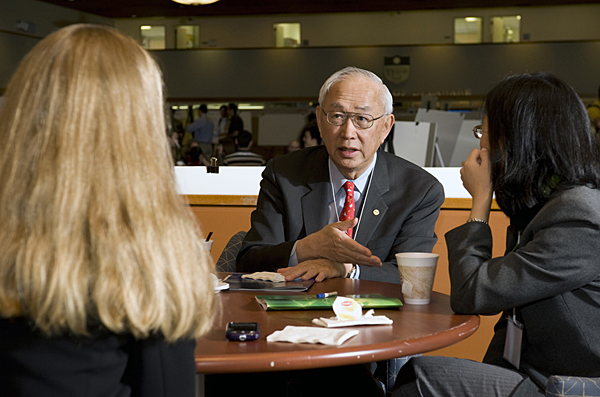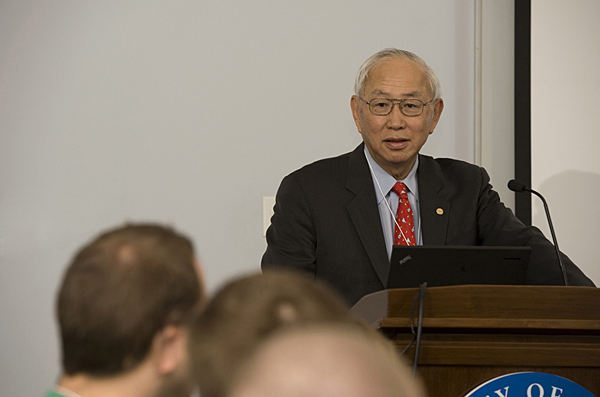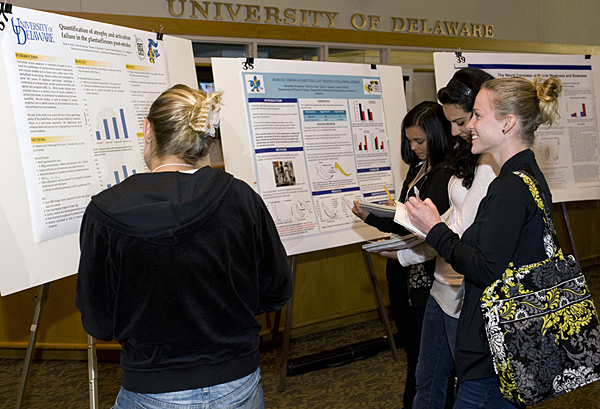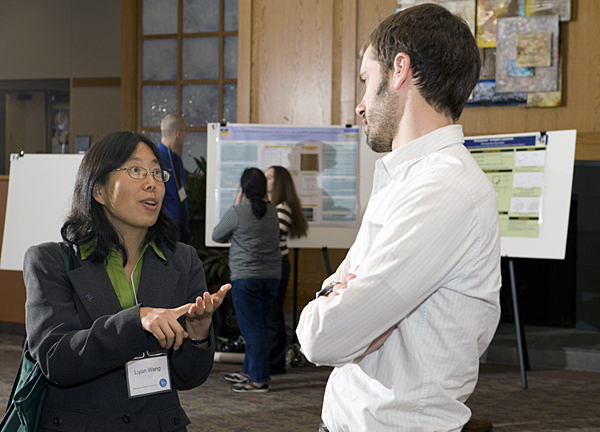Biomechanics research
Biomedical engineering pioneer Van. C. Mow addresses symposium
9:52 a.m., May 18, 2011--Long before biomedical engineering was popular, Van C. Mow was fascinated with how soft tissue functions in the human body.
Mow, a former World War II Chinese refugee and biomedical engineering pioneer, shared how early adversity and adaptability led to his success in orthopedic biomedical engineering May 13 at the 8th annual Biomechanics Research Symposium at the University of Delaware. The event was organized and hosted by UD's Center for Biomedical Engineering Research (CBER).
Research Stories
Chronic wounds
Prof. Heck's legacy
Mow, who is the Stanley Dicker Professor and chair of the Department of Biomedical Engineering at Columbia University, delivered the event’s keynote address to more than 120 attendees.
The talk, entitled “A Smorgasbord of Delectable Morsels: A Personal Odyssey to Biomedical Engineering,” detailed Mow’s unusual path from developing anti-submarine sonar to pioneering theories that would completely transform paradigms regarding soft tissue and joint biomechanics.
In a novel thermodynamics mixture approach, Mow’s work views articular cartilage and other hydrated, charged soft tissues as composites in three separate phases, taking into account the effects of forces such as friction, pressure and electrical charges. His theories provide a base for further research in biomechanics and rank among the most highly cited references in bioengineering literature.
“My story is one of courage to overcome challenges, both personally and professionally,” Mow explained. His work has had important impact on the development of biomedical engineering, particularly in shaping biomechanics in America today.
Poster sessions and podium presentations following Mow’s talk detailed UD graduate research in such areas as bone, cell and cartilage; gait training and stroke; imaging methods and modeling; motor control; and osteoarthritis.
Judges from the UD faculty identified the top two presenters in each category with awards sponsored by the Delaware Rehabilitation Institute. Winners were as follows:
Podium presentations
Amit Katiyar, “Modeling Subharmonic Response from Contrast Microbubbles for Noninvasive Blood Pressure Measurement.”
Sarah Yerkes McCoy, “XYLOSYLTRANSFERASE1 as a Potential Biomarker for Osteoarthritis Progression.”
Posters
Vincent Baro, “Biomechanical Responses of Meniscus to Contact Loading.”
Maria Bellumori, “Improvements in the Rate of Force Development-Scaling Factor Following a High Speed-Low Resistance Cycling Exercise Program.”
Article by Katie Galgano
Photos by Kathy F. Atkinson














